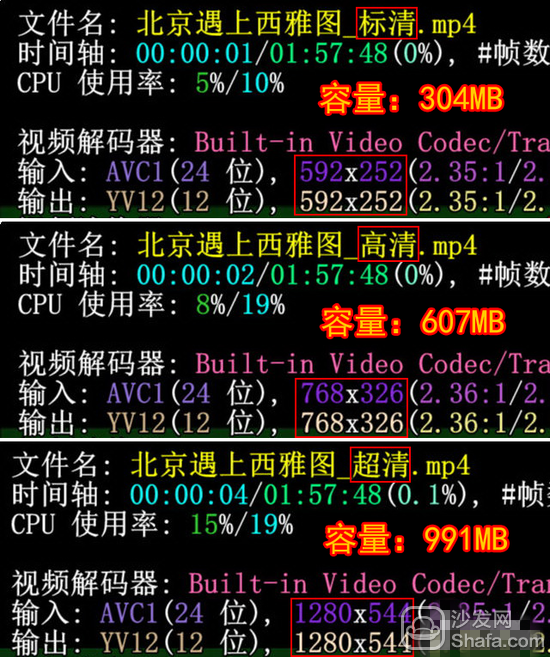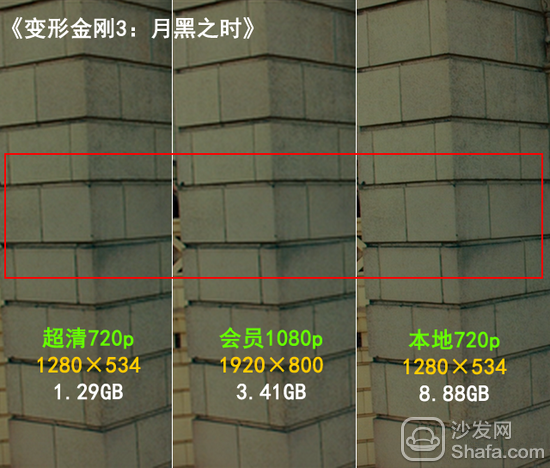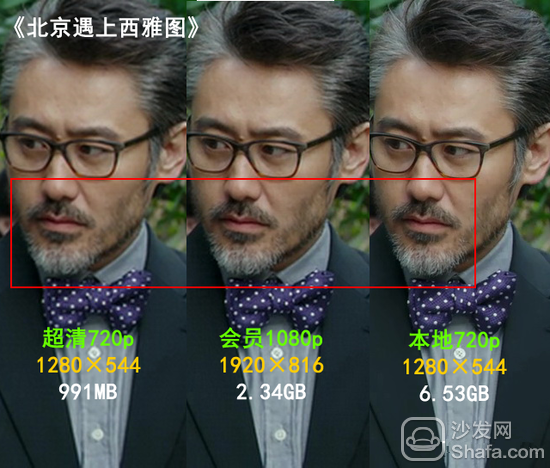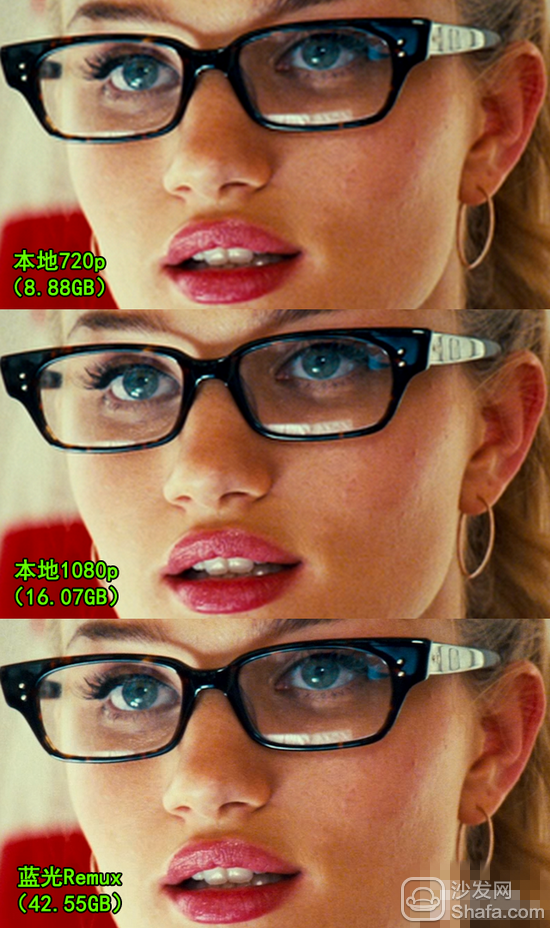For television products, the immutable core value is image quality. We often hear full-HD 1080p TVs or ultra-high-definition 4K TVs, which is actually a description of resolution. The side also reflects that the consumer market has used resolution as a standard to measure the quality of a TV picture. "Image Quality" is misleading. In view of this, we specifically collected Qi Network HD, local HD and Blu-ray Disc video resources, and conducted comparisons in order to clarify the relationship between resolution and picture quality.

Resolution quality difference exclusive test
Consumer transitions focus on screen resolution
Since we want to talk about the relationship between resolution and picture quality, and also for the needs of subsequent tests, simply review some of the mainstream resolution specifications, SD usually refers to 640×480 (or 768×480); HD refers to 1280× 720; Full HD refers to 1920×1080; Ultra HD 3840×2160. Since the 4K Blu-ray standard has not yet been introduced, it is difficult to find different resolution sources for the same source. This time it is impossible to test the reader.

A large amount of test material is ready
From the reality, people watch videos on TV can be roughly divided into three types. One is to access massive Internet video through Internet access; the other is to play local video files through built-in USB or HD player; CD-ROM drive, buy Blu-ray Disc to watch video content. Returning to HD resolution, both network video and local video have 720p and 1080p resolution specifications, while Blu-ray is unified to 1080p specifications. After reading this article, perhaps you will find the best video for you.
User Type Resolution: Network/Local/Blu-ray As mentioned above, there are mainly three types of users watching videos. Watching videos through the Internet has become a habit of mainstream users. Local users mostly download the party, and Blu-rays mainly buy CD-ROM carriers. . So what are the reasons for their respective choices?
Network HD video users (mainstream user groups)

Online video is the future master
With the increasing popularity of high-speed network bandwidth, online video has become the most popular video viewing method for the Chinese people, and will also be the future leader. In fact, online video is an extension of cloud technology. Network video providers share the video content in the cloud. Users can watch it on demand, which is indeed a very convenient and comfortable thing. Of course, there are still some cases where network video is not stable enough, and occasional catoning takes time to buffer. In addition, you must accept harassment of advertisements (members can skip advertisements).
Local HD video users (medium HD players)

Local high-definition control usually has terabyte high-definition resources
Local means that the resources are private, so it needs to occupy user storage space, the capacity of local high-definition video is large, and the pressure for users to store high-definition video is not small. Even so, such users are still reluctant to watch on-demand online video, because a group of spoiled users are accustomed to watching local videos. Local HD video has excellent picture quality and smooth experience. They insist and pursue. It's a good experience.
Blu-ray video users (lazy or enthusiast HD players)

Most Blu-ray video users are top audiophiles
Network HD: Resolution keep phenomenon of virtual standard <br> Network HD: 720p HD resolution does not meet the standards
Under normal circumstances, we can only use the definition of the definition of network video for standard definition, high-definition, ultra-clear, 1080p selection, 1080p resolution confirmed no problem, the remaining standard definition, high-definition, super clear it no problem? We can check the information after the client downloads and automatically transcodes it. Let's take a look.

HD resolution is not up to standard / super resolution barely close to 720p

HD resolution not up to standard / ultra clear resolution up to 720p
In our opinion, the definition of high definition is 1280×720. Through actual tests, it is found that the so-called “high definition†of online video is only about 700 pixels horizontally, which is far below the HD standard of 1280 pixels. Similarly, according to the SD standard of 640×480 (or 768×480), the standard definition provided by network video also has a phenomenon of falsification. In terms of ultra-clear, the resolution has reached the 720p HD standard, and it can be viewed without paying.
Ultra-clear picture quality: sufficient to meet user needs
Above, we confirmed the existence of ambiguity in the resolution of the network's high-definition video through verification. What is the effect of the video actually viewed by the user? Lets come look.

Low resolution affects identification numbers

Super clear 720p resolution excellent picture quality
It can be seen that consumers are still concerned about the resolution, the resolution is too low standard definition or even high-definition, picture quality has been difficult to meet user needs, especially in standard resolution, the text in the screen has been difficult to identify, and the so-called The "HD" is just enough to meet the needs of users. The network's ultra-clear resolution is actually measured at 720p. The effect is also satisfactory. More importantly, there is no extra charge for ultra-clear video.
Resolution ≠picture quality: 1080p lost to 720p
The network 1080p quality is slightly inferior to the local 720p
Through the comparison of SD, HD, and ultra-clear network video quality, we can clearly feel that there is a clear disparity in quality between them. Therefore, we initially believe that under the same platform, higher resolution means better image quality. Is this true? The point-to-point screenshots are compared by 720p or 1080p. The results are shown below:

Building Edge: Local 720p Layering and Detail Sharpening Outweighs Members 1080p

Hair and beard: Local 720p picture clearly outperforms members 1080p
Through the point-to-point comparison of video, the ultra-clear 720p video immediately performed well. We purchased 1080p network video by purchasing a one-month membership. The display capacity is about 2.5 times larger than the ultra-clear 720p. The quality of the video has been substantially improved. It can be seen that the membership expenditure is quite meaningful.
However, the focus of our comparison is whether the local 720p image quality can win the members 1080p. The answer is obvious. Although the resolution is at a disadvantage, the local 720p HD resource shows a deep impression with the help of high bit rate and other video encoding. The bottoming skills, the sharp edges of the buildings, the details of the gaps, the exquisiteness of the hair and the sharpness of the beard close-up, the quality of the local 720p is born in the 1080p quality of the members (the larger the TV size, the difference in quality The more obvious.)
Seeing here, I believe many people can understand why there are ultra-clear 720p and even member 1080p cloud sharing resources on the Internet, and users stick to local video playback. From the perspective of quality experience, local high-definition video has obvious advantages. Readers with video coding experience should know that there are many parameters for the user to adjust the encoder. In order to take care of the smoothness of video playback, the network video will reduce the code rate to encode, and the local high-definition video does not need to consider the problem of the code rate, thus bringing More quality experience. The resolution is not the same as the image quality. The capacity of the video file under the same encoder can explain the problem.
Blu-ray is pure 1080p picture quality on behalf of <br> most pure 1080p: Blu-ray Remux quality
In fact, the local 720p is just an introduction for HD players. Some resources that do not have a collection value will only take a look at the local 720p video, and for the excellent video content, there is no doubt that the native 1080p or even the Remux format will be used for collection. (Remux is a TS file format that extracts lossless video and audio content from Blu-ray discs. The audio and video experience is no different from Blu-ray Disc.)

Blu-ray is the representative of pure 1080p quality
For local videos, larger pictures are needed to see the difference in picture quality. Blu-ray is the most pure 1080p pedigree, with a capacity of up to 50GB being an obstacle to sharing, so local 1080p and 720p video will appear. By reducing the bit rate, resolution, and removing audio and content from next generation, the original 50GB will be used. The capacity on the left and right is drastically reduced to around 10GB (1080p Rip) and 6GB (720p Rip). This way, sharing HD resources becomes very easy and simple (as DVD video was encoded into a small-capacity AVI format).
In fact, Blu-ray Remux (TS file) and 1080p Rip (MKV) for picture quality comparison, in most situations it is difficult to see the difference in picture quality, only in some scenes can feel the pure Remux top quality image of the shocking expression. From the above chart, the 720p suffers a resolution loss to 1080p Rip and Blu-ray Remux due to its fineness. Through the comparison of the frame and the lip, it can be seen that there is a certain advantage in Remux's picture quality, and the Remux frame has a better layering effect. The glossy, shiny lips are also more real.
Written in the final: quality / resolution / 4K TV <br> After layer by layer comparison, it is time to make a summary of this test and give our recommendations, this part is very important, different occasions The choice of blind pursuit of high quality is also not desirable.
Network video content
Through online video testing, the resolution of the network HD has a virtual standard. The so-called high-definition video does not really achieve the HD image quality. Even ultra-clear 720p and member 1080p are hard to afford HD and Full HD quality. sign. At this stage, online video content is suitable for use on smartphones, tablets, monitors, and small-size digital TVs (within 40 inches), because the quality of web videos can be viewed with a relatively small physical display size.

Small size screen is harder to notice the difference in image quality
Local 720p/1080p Rip HD Resources
Local 720p/1080p Rip HD resources are generated by Blu-ray 1080p video encoding. The picture quality experience is more secure. It is suitable for mild, medium, high-end audiophiles and senior movie enthusiasts. The playback platform is suitable for 55-inch and 55-inch TVs. , also suitable for 120-inch projector for playback. Normally, the 1080p Rip quality performance has been infinitely close to the Blu-ray level, and the capacity is only 1/4 of the Blu-ray Disc. For the collection control, the 1080p Rip is very cost-effective, whether it is the time cost for download or storage. The cost of the media.
Blu-ray Remux lossless resources
Blu-ray not only represents the uncompromised, pure 1080p top quality, but also takes care of the DTS-HDMA or Dolby Ture HD times, which means that you want to fully play out the pure 1080p picture quality and the next-generation 5.1/7.1 audio experience. Luxurious audio and video equipment, in other words, although Blu-ray has appeared for so many years, it is still something ordinary people can't afford. For affordable high-end audiophiles, Blu-ray is currently the only choice (before the Blu-ray 4K standard was introduced).
Written at the end:

The quality of video content has largely determined the quality of the image
If we can't afford to wait until the Blu-ray 1080p, then imagine how hot the current 4K TV is. Especially in today's lack of 4K sources, this is why the author has always recommended that her friends still purchase 1080p TVs. Through the actual measurement, the network 1080p and even the network 4K source are all vulnerable to a paper tiger. The resolution is not equal to the image quality. The discussion of the image quality should start from the 720p/1080p Rip. Conversely, consumers who buy 4K TVs do not necessarily mean that they have better picture quality than 1080p TVs. It's all about content resources. Finally, I hope that this article will benefit those readers who are looking for quality.
Recommended installation sofa butler Download: http://app.shafa.com/
